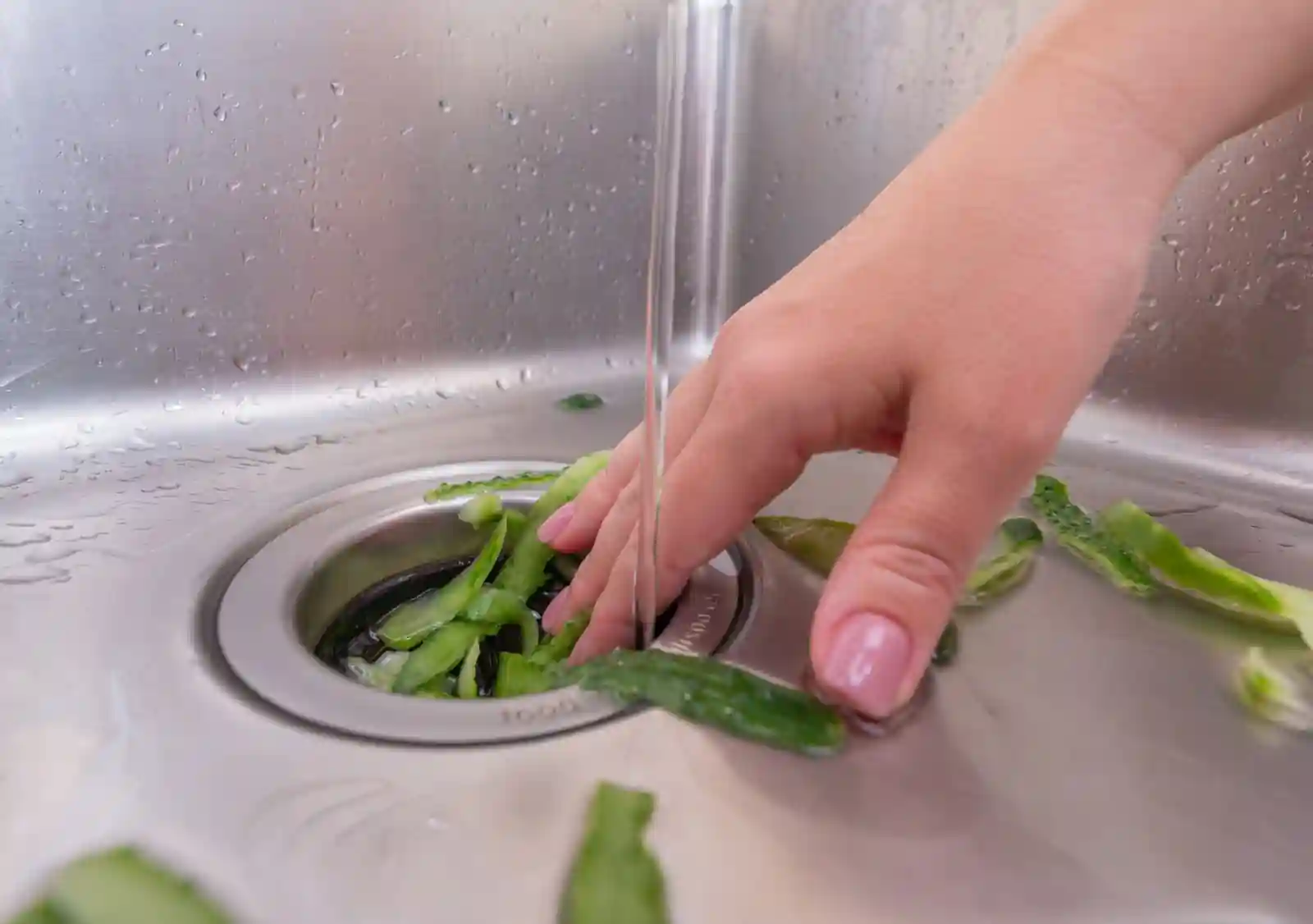Call us at...
Richard T. Curley
Richard T. Curley
Richard T. Curley
PLUMBING & HEATING

Garbage Disposal Clogged, How Do I Unclog a Garbage Disposal?
Households often face irritating problems with clogged garbage disposals. You can solve this common household problem by yourself through straightforward steps. This guide will show you the proper methods to safely fix your blocked garbage disposal.
Step 1: Turn Off the Power
The first step for any troubleshooting requires that you turn off your disposal completely to prevent potential accidents.
Check for the power source. Most garbage disposals require a switch located under the sink for operation. Make sure the unit is in ‘off’ mode and unplug it when needed.
The safety feature serves two essential purposes by preventing accidents and enabling you to examine the device while preventing accidental activation.
Step 2: Check for Visible Clogs
Look inside the disposal for any food debris or objects causing the blockage. If it’s safe, use tongs to remove them.
The main things that cause blockages in disposals include tiny utensils and bones, along with fibrous food pieces like celery. The removal of these items usually solves the problem right away.
Be careful when attempting to put your hand inside the disposal. Keep your hands away from direct contact with sharp blades because they remain inside the disposal.
You can use long-handled pliers to safely remove objects that are stuck but difficult to reach without putting yourself in danger of injury.
Step 3: Use the Reset Button
The reset button located at the bottom of your disposal unit should be pressed in this step. This action might help the disposal work properly again.
The reset button appears as a red button to users. When you press this button, it resets the internal motor, which can solve problems caused by overload.
Verify if the disposal operates correctly after you press the reset button. This simple procedure should not be overlooked by users.
Step 4: Clear the Pipes
When the blockage continues to exist, you should attempt to use a plumber’s snake or equivalent tool to penetrate deeper into the pipes and eliminate blockages.
Don’t shy away from this step! The plumber’s snake tool enables users to reach clogs located in curved sections of plumbing systems for effective cleaning.
When you progress through this process, expect to encounter loose debris. A bucket should be available to contain any unexpected messes that might occur.
If you feel uncomfortable using these tools, then you should seek assistance from a professional plumber. Professional advice should be sought whenever you are unsure about anything.
Step 5: Run Hot Water
After removing blockages, you should allow hot water to flow through the disposal for several minutes to clean out all contents.
The next important step removes every remaining particle from the system. The process keeps pipes free of blockages so future clogs become less likely to occur.
Adding dish soap during this process will enhance the cleaning effect. Soap acts as a residue-breaker for greasy substances that might have formed inside the disposal.
Check for unusual sounds during water flow after completion. Grinding sounds indicate that you should reperform the previous steps.
Final Tips for a Healthy Disposal
Your garbage disposal clog has been successfully resolved. Regular disposal maintenance combined with careful waste input will help stop future clogs from forming. Running ice cubes through the disposal creates a cleaning effect that removes old debris from its interior. Always keep safety first and seek professional help when you are uncertain about any situation.

